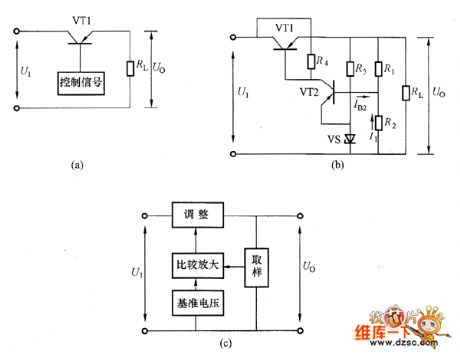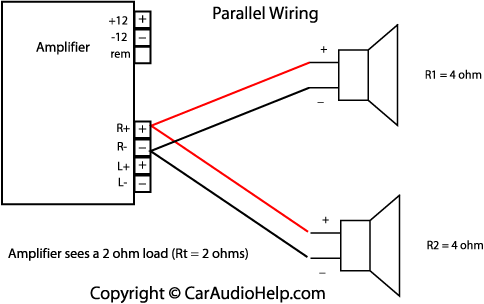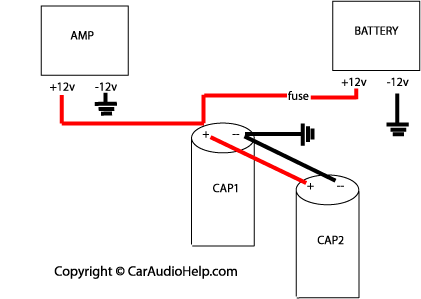Circuit diagram :

 Figure 2. In Figure 1, one of U1s two audio outputs (top trace) is protected when its external terminal accidentally contacts an 18V supply voltage (2nd trace).
Figure 2. In Figure 1, one of U1s two audio outputs (top trace) is protected when its external terminal accidentally contacts an 18V supply voltage (2nd trace).


 Figure 2. In Figure 1, one of U1s two audio outputs (top trace) is protected when its external terminal accidentally contacts an 18V supply voltage (2nd trace).
Figure 2. In Figure 1, one of U1s two audio outputs (top trace) is protected when its external terminal accidentally contacts an 18V supply voltage (2nd trace).


 However, before you may need to think of the basic home theater design for your home theater system, you may need to know the size of the room for the home theater set up. The size of the room to where the home theater will be set up will depend on how basic the home theater design needs to be.
However, before you may need to think of the basic home theater design for your home theater system, you may need to know the size of the room for the home theater set up. The size of the room to where the home theater will be set up will depend on how basic the home theater design needs to be.
This non transistor tester circuit devices that isn’t accurate, but utility of this test device enough assisting in assaying of quality of transistor. This circuit can show promise about condition of a transistor is still in condition either or have been in condition of breakdown. Besides, earns also applied to test amplification of current from the transistor is categorizing transistor type A (amplifier of current 140 - 270), transistor type B (270 - 500), or transistor type C (amplification > 500).
For example earns we to take a n p-n transistor as transistor which will be tested. The transistor packed into socket appropriate TUT = Transistor Under Test) hereinafter switches S2 is attached according to at schematic. If LED D2 blazed, hence the transistor is type C, medium if LED didnt ON, switches S2 must be removed on course middle and if still had not blazed, removes switches to last position. If LED is ON at course last switches, means transistor is type A.
On the contrary, if LED remaining to extinguish though had been tested at all of position of switches, hence transistor had been in condition of breakdown or has amplification of current smaller than 140, so that for transistor having small signal basically cann’t be utilized. Bases current to transistor is being tested able to be broken by using switches using compress switches. If LED still in condition blazed, means happened links shortening between colector and emitor at the transistor.
This very simple circuit work principle. Transistor tested receives bases current around 10mA through R1. With assumption that transistor is still be good, the thing will yield strain at R2 until R4 and depend on position of switches S2, some of this voltage compared to to a reference voltage by utilizing IC 1. Mode of action from circuit which its inside is also approximately equal, only inside of circuit destined for PNP transistor. The supply of the voltage is required by this circuit only from battery.


 However, with a limited amount of circuitry, it is possible to adapt the line input of a modern amplifier or recorder so that it can handle the low-level signals generated by the magnetodynamic cartridge of a phonograph. Of course, the circuit has to provide the well-known RIAA correction that must be used with these cartridges. The preamplifier shown here performs the job using only one opamp, four resistors and four capacitors. For a stereo version, you will naturally need two of everything. Any stabilized power supply that can deliver ±15V can be used as a power source.
However, with a limited amount of circuitry, it is possible to adapt the line input of a modern amplifier or recorder so that it can handle the low-level signals generated by the magnetodynamic cartridge of a phonograph. Of course, the circuit has to provide the well-known RIAA correction that must be used with these cartridges. The preamplifier shown here performs the job using only one opamp, four resistors and four capacitors. For a stereo version, you will naturally need two of everything. Any stabilized power supply that can deliver ±15V can be used as a power source.


 Another voltage divider network, R4, R5 and P1 divide the voltage between supply voltage and desired oltage. This divided voltage, filtered by C2, is fed to the inverting input of IC1 to compare levels. The result causes D1 to light or remain off. Turn P1 to the end of R4 to hold off D1. Then connect a load causing over current and adjust P1 towards the end of R5 until D1 lights. The accuracy of the circuit depends entirely on the tolerances of the resistors used - high stability types are recommended.
Another voltage divider network, R4, R5 and P1 divide the voltage between supply voltage and desired oltage. This divided voltage, filtered by C2, is fed to the inverting input of IC1 to compare levels. The result causes D1 to light or remain off. Turn P1 to the end of R4 to hold off D1. Then connect a load causing over current and adjust P1 towards the end of R5 until D1 lights. The accuracy of the circuit depends entirely on the tolerances of the resistors used - high stability types are recommended.
 The transistors series voltage regulator circuit is shown in the picture. And, the picture (a) is equivalent circuit. The VT1 is adjustment transistor which is used to adjust the output voltage. The VT1 and load RL are in series. So this circuit is called the series voltage regulator circuit. Because the adjustment tube is using the transistors, the transistor series voltage regulator circuit could work under a big working current which could overcome the weakness that the zener diode regulator circuits output current is limited by the zener diode limiting current. The picture (b) is the practical series voltage regulator circuit. The picture (c) is its diagram circuit.
The transistors series voltage regulator circuit is shown in the picture. And, the picture (a) is equivalent circuit. The VT1 is adjustment transistor which is used to adjust the output voltage. The VT1 and load RL are in series. So this circuit is called the series voltage regulator circuit. Because the adjustment tube is using the transistors, the transistor series voltage regulator circuit could work under a big working current which could overcome the weakness that the zener diode regulator circuits output current is limited by the zener diode limiting current. The picture (b) is the practical series voltage regulator circuit. The picture (c) is its diagram circuit. 



















 Loudspeaker Impedance Meter Circuit Diagram
Loudspeaker Impedance Meter Circuit Diagram P1_______________4K7 Linear Potentiometer
R1______________12K 1/4W Resistor
R2_______________2K2 1/4W Resistor
R3_______________1K 1/2W Trimmer (Cermet)
R4_______________1K5 1/4W Resistor
R5_______________4K7 1/4W Resistor
R6_______________3K3 1/4W Resistor
R7_____________100R 1/4W Resistor (See Notes)
R8_______________1K 1/4W Resistor (See Notes)
R9_______________1K 1/4W Resistor (Optional)
C1______________22nF 63V Polyester Capacitor
C2_____________330nF 63V Polyester Capacitor
C3______________22µF 25V Electrolytic Capacitor
D1,D2_________1N4148 75V 150mA Diodes
D3_______________3mm Red LED (Optional)
Q1,Q2,Q3_______BC550C 45V 100mA Low noise High gain NPN Transistors
IC1____________78L05 5V 100mA Regulator IC
SW1,SW2_________SPDT Toggle or Slider Switches
SW3_____________SPST Toggle or Slider Switch
B1________________9V PP3 Battery
Clip for PP3 Battery